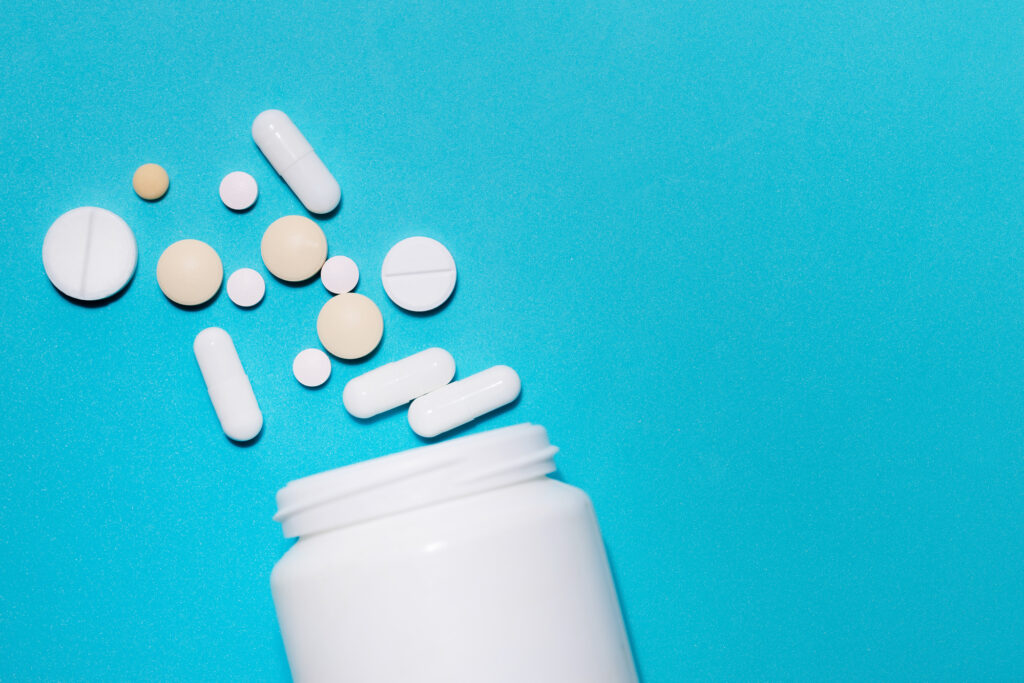The increased cost of prescription medications is a concern for many, as prices continue to climb. From January 2022 to January 2023, the average price of drugs increased by 15.2%, compared to 11.5% the previous year.
This significant hike can make it difficult for people to afford the medications they need, forcing some to prioritize other essentials over their health. However, there are ways to alleviate this financial strain.
Today, we offer practical strategies on how to save money on prescription medicine. By exploring these methods, you can access the treatment you need without compromising your financial stability.

How to Cut Costs When Getting Your Prescription Medicine
1. Understand Your Prescription Needs
The first step in managing your medication costs is to understand what you’re taking and why. Schedule a consultation with your healthcare provider to review your prescriptions. Ask about the possibility of switching to generic alternatives, which can be significantly cheaper than brand-name drugs.
Regularly reviewing your medications can also help you identify any that you no longer need, further reducing costs.
2. Shop Around for the Best Prices
Prices for the same medication can vary significantly between pharmacies. Different online tools and apps can show you the best prices available at pharmacies near you. Additionally, consider big-box retailers and membership clubs, which often offer competitive prices on prescription medications.
3. Use Prescription Discount Cards and Coupons
Prescription discount cards and coupons can offer substantial savings on your medications. Programs like the ones provided by Health Access Now work by negotiating lower prices with pharmacies and passing those savings on to you. Therefore, they are an easy and effective way to reduce your out-of-pocket costs.
To use a prescription discount card or coupon, simply present it at the pharmacy when you pick up your prescription. The pharmacist will apply the discount, which will lead to significant savings compared to the regular price.
These discounts can also be used whether you have insurance or not, so they’re a versatile tool for managing medication expenses.
4. Explore Prescription Assistance Programs
Prescription Assistance Programs (PAPs) are designed to help individuals who struggle to afford their medications. They are often sponsored by pharmaceutical companies and provide free or low-cost prescription drugs to eligible participants.
PAPs work by offering direct support to patients who meet specific criteria, which typically include:
- Income limits
- Lack of insurance coverage
- Underinsurance
To qualify, you’ll need to provide proof of income, such as tax returns or pay stubs, and a valid prescription from your healthcare provider. Some programs may also require documentation of your insurance status.
The process usually involves completing an application form, which can be found on the pharmaceutical company’s website or through assistance organizations like Health Access Now. Once approved, you may receive your medications through mail order or a participating pharmacy.
Using PAPs can significantly reduce your out-of-pocket expenses, making essential medications more accessible. They are designed to bridge the gap for those in financial need, ensuring you don’t have to choose between your health and other necessities.
Other benefits of using PAPs include:
- Free or low-cost brand-name medications
- Easy application process with help available
- Reliable delivery of medications
- Less financial stress, more focus on health
- Better adherence to treatment plans
- Support from patient assistance experts
5. Check for Insurance Coverage and Benefits
Understanding your insurance coverage can help you maximize your benefits. Review your plan’s formulary to see which medications are covered and at what cost. Different tiers of medications have different copays, so opting for a lower-tier drug can save you money.
Many insurance plans also offer mail-order services, which can provide a 90-day supply of medication at a reduced cost compared to a 30-day supply from a retail pharmacy.

6. Consider Buying in Bulk
Purchasing a 90-day supply of your medication instead of a 30-day supply can lead to significant savings, as bulk buying reduces the number of times you pay the dispensing fee and often comes with a lower per-unit cost.
Talk to your doctor and pharmacist about this option to ensure it’s suitable for your medications and health condition.
7. Look Into Generic and Over-the-Counter Options
Many generic drugs are equivalent to their brand-name counterparts in dosage, strength, route of administration, quality, and performance, but they are typically much cheaper. Ask your healthcare provider if a generic version of your medication is available.
For some conditions, over-the-counter (OTC) medications may also be suitable alternatives. Discuss these options with your doctor to ensure they meet your health needs.
8. Seek Out Community Health Resources
Community health clinics and local health departments often provide services at reduced costs or even for free. Moreover, they can sometimes offer medications at lower prices or help you find programs to reduce your costs.
9. Use Online Pharmacies Carefully
Legitimate online pharmacies can offer lower prices and the convenience of home delivery. However, you need to ensure the pharmacy is reputable.
Look for pharmacies accredited by the National Association of Boards of Pharmacy (NABP) or those displaying the Verified Internet Pharmacy Practice Sites (VIPPS) seal. Avoid websites that sell prescription drugs without requiring a prescription, as these are often illegal and unsafe.
10. Discuss Cost-Saving Options with Your Doctor
Finally, have an open conversation with your healthcare provider about medication costs. Doctors can suggest cost-effective treatment plans, including therapeutic alternatives that are less expensive but equally effective. They can also recommend lifestyle changes that might reduce your need for certain medications.
Never hesitate to discuss financial concerns with your doctor; they are there to help you find the best solutions for your health and budget.

Looking to Save Money on Prescription Medicine?
Managing prescription medication costs can be challenging, but by using the strategies outlined above, you can greatly reduce your expenses. From shopping around for the best prices to exploring assistance programs, there are many ways to save.
If you spend over $50 per month per medication, Health Access Now can help you qualify for highly discounted medication by applying for benefits given by non-profits and government programs on your behalf.
You can browse our website to search for the prescriptions you use to see if they qualify for prescription assistance in your state. If you do, we will guide you through the rest of the process.
Our goal is to help remove the financial burden that the cost of medication can incur on everyday people. Contact us today to get started on your path to more affordable medication.


